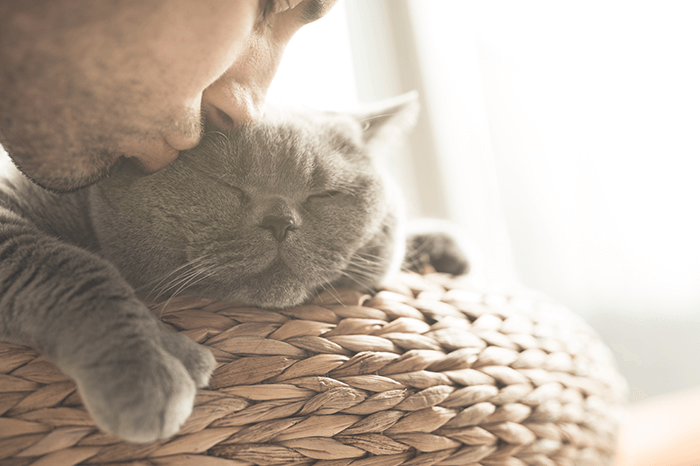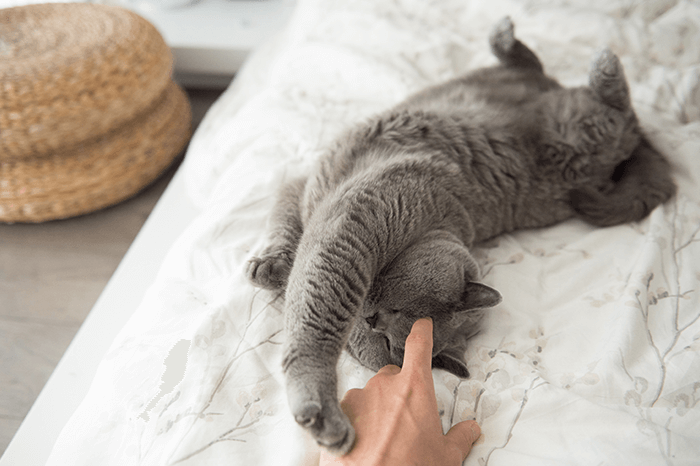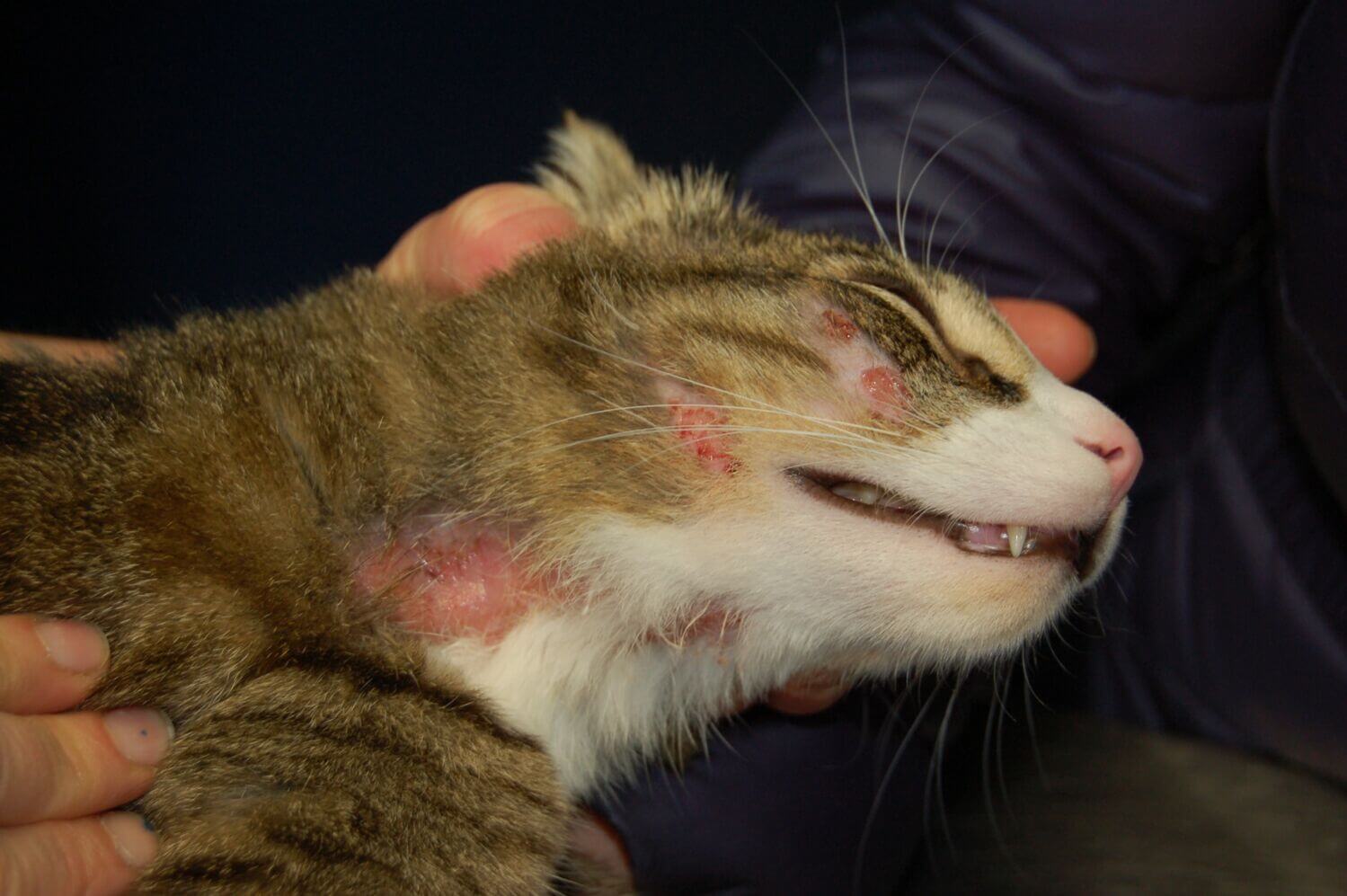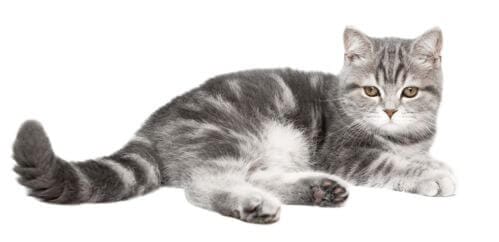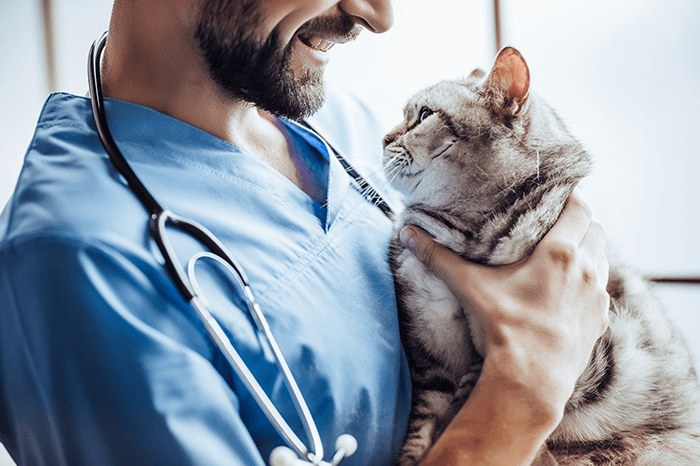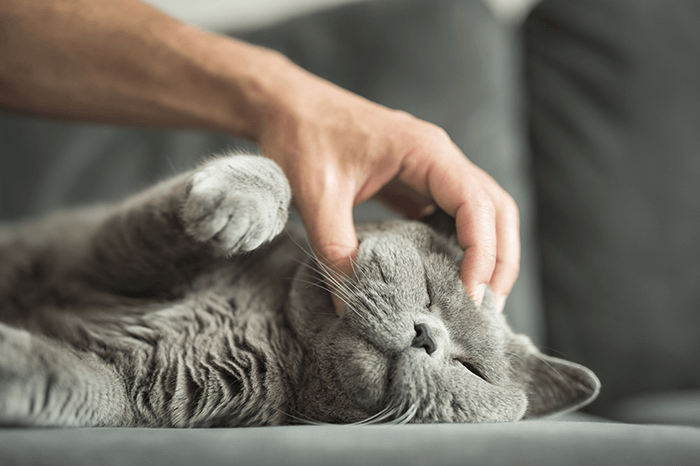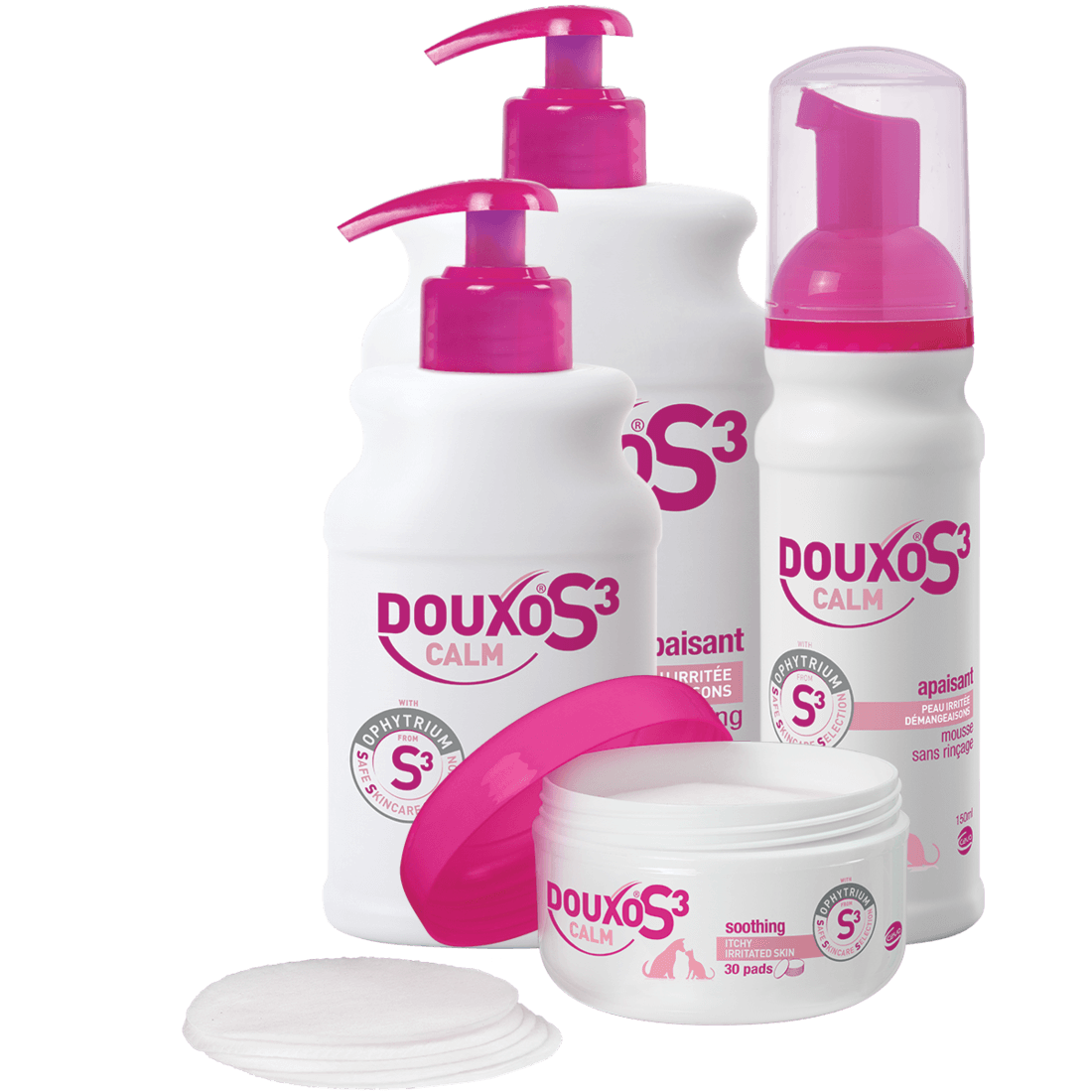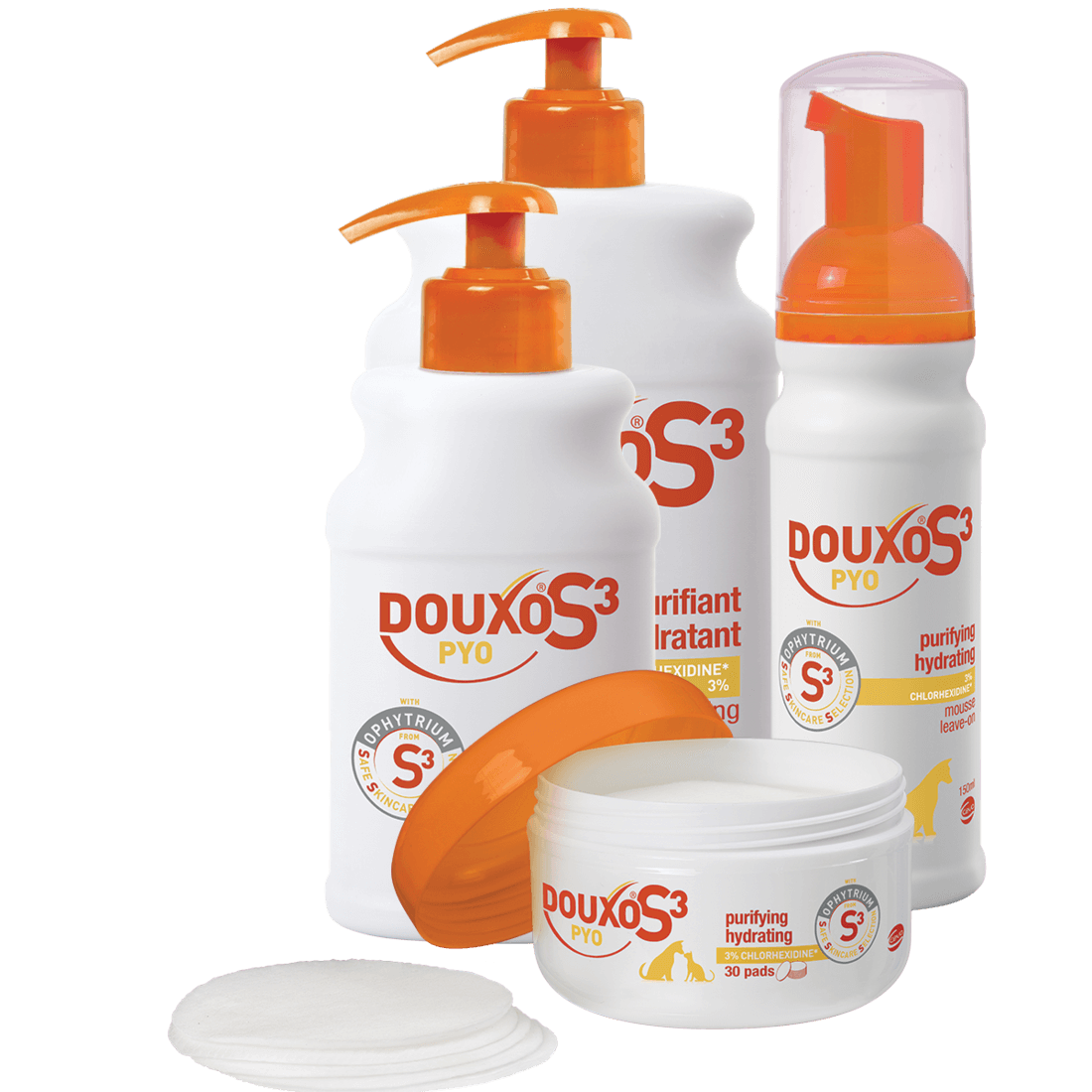Hot spots in cats: what are they and what can we do about them?
Marina G VeterinarianHot spot well-known skin disorder, especially in dogs, not as common in cats. Alleviate the symptoms, find and treat the cause and check regularly your cat’s fur are key to prevent reocurrences.
The sense of relief one gets from scratching an itch can be considered one of life’s greatest pleasures, both for ourselves and our feline friends! But sometimes, if your cat is suffering from pain or skin irritation, it can be difficult to stop scratching, leading to skin damage, which can result in hot spots.
A hot spot is not a disease. It is, however, a painful lesion that requires veterinary attention to find out what is behind it and determine the best way to treat it.
What are hot spots in cats?
A hot spot is how we commonly refer to pyotraumatic dermatitis or acute moist dermatitis.
It manifests as a superficial, ulcerative, inflammatory, quickly secondarily infected lesion caused by self-induced trauma, as the cat bites, grooms or scratches its skin persistently to alleviate an itchy or painful stimulus. The typical hot spot lesion is a well-circumscribed area of bald, red, moist, and oozing skin, which eventually develops a crust appearing suddenly, in a couple of hours.
The size of the lesion can vary, mainly depending on the intensity of the self-trauma. Usually, hot spots start as small lesions and can become larger in a matter of hours, particularly if the cat continues to injure itself or treatment is delayed, as hot spots are painful and itchy.
With the skin barrier losing its integrity, bacteria normally present on the skin colonise the existing wound. Usually, bacterial colonisation or overgrowth only happens superficially. However, without treatment to quickly soothe the itch, the infection can go deeper as cats put a lot of efforts alleviating the itch that worsen the lesions.
Hot spot lesions can affect any part of the cat’s body but most often show up where there is pain or itchiness.
Similar conditions not to be confused with hot spots are seen in allergies: eosinophilic plaques (very pruritic lesions that commonly appear as bald patches with raised areas of red skin, which can appear anywhere on the body but more commonly on the stomach), eosinophilic granuloma (lesions of raised and thickened skin, possibly with some reddening and likely with hair loss and ulceration – these can again appear anywhere on the body but are commonly found in the mouth, on the hindlegs and on the feet), and head and neck pruritis (itchy, crusty, ulcerated lesions around the head and neck area). These conditions usually take longer to appear.
What causes hot spots in cats?
Hot spots are caused by damage to the skin, usually due to the cat scratching or overgrooming itself (self-trauma), as a response to pain or pruritus, and subsequent bacterial proliferation.
Any condition that causes itchiness or pain can trigger persistent biting, grooming or scratching, potentially leading to the development of hot spots.
Common causes include:
- Flea allergy dermatitis,
- Other allergic diseases, like atopic dermatitis or food allergies,
- External parasites, such as lice or mites,
- Conditions that lead to otitis externa,
- Irritant contact dermatitis,
- Conditions that lead to matted fur and reduced grooming,
- Painful conditions, like osteoarthritis and idiopathic cystitis,
- Stress or boredom.
Which cats can suffer from hot spots?
Long-haired cats or cats with dense coats can be more susceptible to the development of hot spots, as well as cats with a history of allergies or debilitating diseases. Also, although hot spots can happen at any time of the year, they are more likely to occur during hot, humid weather, which favours bacterial proliferation.
If your cat suffers from a painful or skin condition, it is more prone to developing hot spots as well. As noticing that your cat is in pain can sometimes be difficult, we recommend that you keep an eye on its usual demeanour and behaviour. Excessive vocalisation and obsessive biting or grooming of the same body area, for example, can be suggestive that something might be wrong.
Fortunately, hot spots are not a common issue seen in cats. However, they do occur, and the sooner you spot them, the sooner you can help your cat and avoid further complications.
When to go to the vet?
If you think your cat has a hot spot, it is very important to seek advice from your veterinary surgeon.
A thorough physical and dermatological exam and performing diagnostic tests may be needed to determine the extent of the problem and to find out what is behind it. Only then can your vet create a tailored treatment plan that you can follow at home.
As hot spots can worsen quickly, do not delay getting your cat veterinary help. While waiting for your appointment, try your best to keep your cat from scratching or grooming the existing lesion, and then follow your vet’s recommendations.
How are hot spots treated?
It’s vital to diagnose and treat the underlying condition that is leading to the development of hot spots. Otherwise, they are likely to recur. Treatment of hot spots usually consists of:
Clipping
Clipping the fur around the lesion allows better air circulation and makes it easier to clean and apply topical medication.
Cleaning & healing
Cleaning is an essential step in treating hot spots, as it helps remove inflammatory debris as well as reduce the number of bacteria if present. Then, treatment will aim to bringing soothing ingredients, antimicrobials if necessary or a combination of both. Hot spot treatment is usually topical to bring the ingredients where necessary but depending on the case, you veterinarian may prescribe additional oral or injectable medication. Whenever possible, topical antimicrobial therapy should be preferred to reduce or avoid the use of systemic antibiotics and minimise the risk of antibiotic resistance, an emerging concern in both veterinary and human medicine.
DOUXO® S3 range of topical products is formulated with active ingredients that help clean the skin and coat and also act locally on the damaged tissues, helping restore the skin integrity and protective function.
Where infection is present, DOUXO® S3 PYO, is formulated with chlorhexidine, a topical antiseptic that helps reduce bacterial overgrowth. Ophytrium contained in the product allows to soothe irritation, hydrate the skin and prevent further adhesion of pathogenic bacteria. This line is available in shampoo, and pads for cats, the latest being very convenient on hot spots.
DOUXO® S3 CALM is to be preferred where there is no evidence of infection. It is available as a shampoo, mousse and pads too. You can use this product as recommended by your vet, even if your cat is not fond of baths. It provides relief for itchy cats while simultaneously cleaning, nurturing the skin, strengthening the damaged skin barrier while preventing the adhesion of pathogenic bacteria.
Allowing healing
A cat’s hot spot won’t heal if it keeps scratching at it or grooming over it, so it is crucial to stop the cat from reaching the lesioned skin.
We know cats are not fans of bodysuits or e-collars, but keep in mind that a few minutes of licking a hot spot can easily ruin all the progress achieved and that is situation won’t last more than a couple of days.
How to prevent hot spots in cats
Pyotraumatic dermatitis is a painful and distressing condition, and there are steps you can take that may help prevent this.
Identify and treat underlying causes
As secondary lesions, hot spot recurrence and severity can be greatly reduced if the underlying cause is known and treated. If this is not possible or if your cat suffers from a chronic condition, making sure that the skin is hydrated and healthy can help keep hot spots from developing.
Keep on top of parasite treatments
Keeping your cat’s parasite treatments up-to-date and regularly checking your cat’s ears for signs of infection can also help.
Maintain optimal skin health
Maintaining your cat’s coat in good condition, brushing it regularly, and making a habit of checking its skin may seem insignificant but can make a big difference. Be particularly vigilant if your cat is of a long-haired breed and during hot and humid weather. Prompt detection and treatment of small hot spots will also prevent them from getting worse.
Clipping its claws makes it a bit harder for the cat to harm its skin. However, this is not recommended in cats that are allowed outside.
